Coimbra
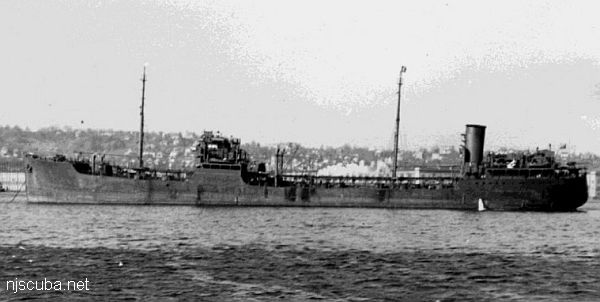
- Type:
- shipwreck, tanker, England
- Name:
- Coimbra is an important city and university in east-central Portugal.
- Built:
- 1937, Germany
- Specs:
- ( 423 x 60 ft ) 6768 gross tons, 40 crew
- Sunk:
- Thursday January 15, 1942
torpedoed by U-123 - 34 casualties - Depth:
- 190 ft, starts at 165 ft
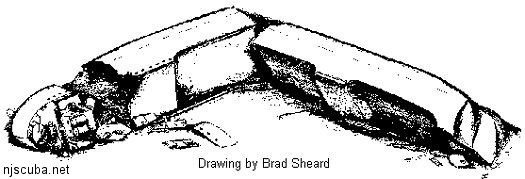
January 15, 1942, 1:40 A.M. There is a set of steamer lanterns to starboard. Once again, the brightly burning masthead lights aid the German raiders in determining the vessel's course and speed. As they close silently on the bearer of these beacons, they recognize it as another large tanker making its way peaceably eastward at 10 knots. What good fortune!

After an hour of careful maneuvering to position his boat ( the U-123 ) for a good shot, Lieutenant Hardegen unleashes a single torpedo out of tube number one, from a distance of only 800 meters. The calculations are accurate; the deadly steel fish runs straight and true. After 58 seconds it strikes astern of the tanker's bridge with a terrific explosion. A 600-foot-high pillar of flame and smoke springs upward, lighting the entire sky as if it is daylight. The ship takes an immediate list to port. A distress signal quickly bursts over the airways. It is acknowledged by the Cape Race wireless station, but this is of little comfort to the British seamen aboard the doomed tanker Coimbra.
Worried that the incredible explosion must have been seen clear to New York City, Hardegen works quickly to prepare a second shot and finish off his victim. He has grown wary now that their presence near the coast is known. A second torpedo from tube number five hits the tanker's hull 150 feet forward of her stern after a 45-second run. Following the loud detonation, the familiar pillar of flame erupts from the tanker, spewing flaming oil high into the sky, before it rains down upon the entire ship.
Aboard the tanker, fires burn ferociously at both impact points. The men scramble to the lifeboats, racing to abandon ship before she goes down. They manage to get several of the boats and a couple of rafts over the side. One of the boats capsizes in the cold December sea, and its occupants cling desperately to its upturned hull. Chief Officer W. L. Pinder, having gone forward on the main deck to assess the damage after the first torpedo hit, finds himself trapped between two raging fires after the second explosion. Taking the only avenue of escape open to him, he jumps overboard into the icy sea. Fortunately for Officer Pinder, the Germans pick this very instant to switch on a searchlight, turning it on the burning tanker in order to view their handiwork. This stroke of luck enables Pinder to locate the capsized lifeboat, lying nearby in the dark sea with 11 men already clinging to it. Together they manage to right the boat and scramble in. The continually breaking swells make it impossible for the men to empty the boat of water, however. Shaken and cold, the 12 sailors huddle down into the water that fills the small boat, savoring its relative warmth, which shields them from the below-freezing air temperature. Nearby, only 15 minutes after the second torpedo hit, the men watch as their burning ship sinks by the stern. Mimicking the Norness before her, the Coimbra settles to the ocean floor, her bow jutting gruesomely from the sea at a haphazard angle, exposed to her forward mast.
Of the entire crew of 46 men, including 4 Navy and 2 Army gunners, there are only 9 survivors left to tell of the sinking. The death toll for the American coast is growing rapidly.
The Coimbra lies on her starboard side under 180 feet of water. Her hull is broken at each of the torpedo impact points, forming three fairly intact sections. The shortest of the three pieces is the extreme stern, whose deck lies heeled over approximately 80 degrees to starboard. Part of the superstructure is still in place, including the stern gun that Lieutenant Hardegen made a note of in his war diary. Just forward of the stern section lies the midships piece of the wreck, intact to a point approximately 40 to 50 feet aft of the center island bridge. It lies inclined somewhat farther to starboard at an angle of about 100 degrees. Forward of this second break in the hull, the remainder of the ship runs intact all the way to her bow, which is now somewhat crumpled and twisted, and heeled over so far that it lies nearly upside down on the sandy bottom.
It is difficult to ascertain the condition of her internal tanks. In the extreme stern, her hull is but an empty shell. All the internal appointments of the crew's quarters have slid to the lower, starboard side of the wreck. Here, amidst a pile of rubble, divers have found her galley implements, including a few unbroken pieces of china bearing a small, blue flag emblazoned with a single letter "S". This apparently represents the initials of her owners, the Socony-Vacuum Company, Ltd. There were no oil tanks in this part of the ship.
At both of the torpedo impact points, the oil tanks are open to the sea and empty. Between the hull breaks, little can be concluded about the presence or absence of oil inside. The exterior of the hull is in excellent condition, with no apparent breaches. Along the sand, several of her tank inspection hatches can be seen, bent and distorted by the weight of the ship's hull. While open to the sea, the hatches now lie at the bottom of the tank since the ship lies on her starboard side. This effectively blocks the escape route for the lighter-than-water oil.
For now, the old tanker lies quietly on the ocean bottom, visited frequently by fishermen and occasionally by curious divers. Her location is clearly marked, however, by the thin slick of lubricating oil continuously oozing from her hull. No one knows exactly how much oil remains in her holds, or how long her heavy, steel hull will resist the relentless deterioration of the seawater in which she lies. Tragically, the Coimbra may someday make the headlines once again.
From Brad Sheard's book Beyond Sportdiving
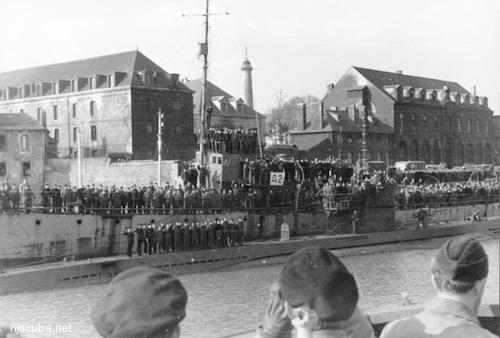
The U-123 sank the Norness the previous day - the first loss of the war in U.S. waters.

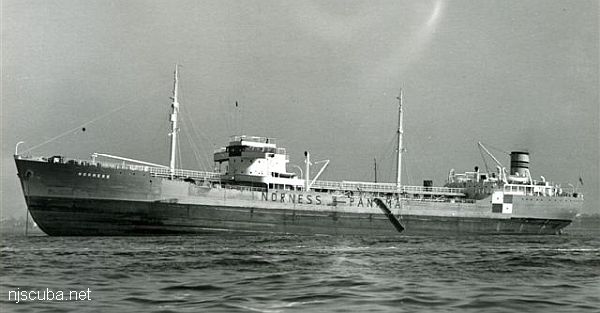
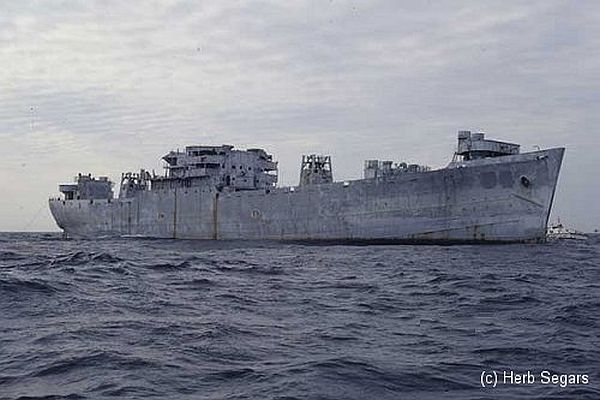


Questions or Inquiries?
Just want to say Hello? Sign the .